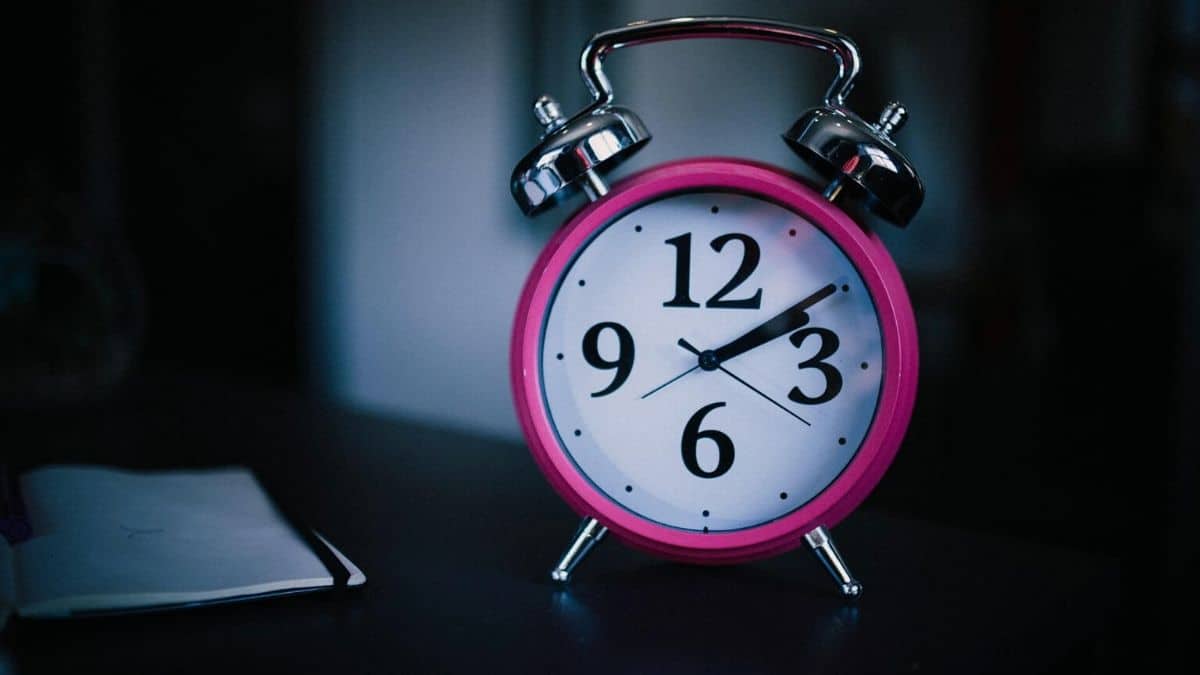In Spanish, ‘qué hora’ and ‘a qué hora’ are used to ask questions related to time. Both can be translated as ‘what time’, but they’re not synonyms. In fact, each of these questions has a different purpose. Since they look very similar, many Spanish learners wonder what’s the difference between ‘qué hora’ and ‘a qué hora’.
‘Qué hora’ is only used to ask about the time. It only works with the verb ‘ser’, therefore, it could be translated as ‘what time is it?’. ‘A qué hora’ expresses the time when an activity takes place. It literally means ‘at what time’ but can be translated as ‘what time’.
Since both ‘a qué hora’ and ‘qué hora’ can be translated as ‘what time’, many new Spanish speakers confuse them and affect their fluency. Both of these phrases are very useful in Spanish, as a result, in the following sections, we’ll show you how to identify them and use them properly. By the end of it, you’ll have a better understanding of these words.
Qué hora vs A qué hora in Spanish
‘Qué hora’ and ‘a qué hora’ are two Spanish questions that we can use to pose questions related to time. But if you want to avoid making mistakes or affecting your fluency, you need to know that these phrases are used for different purposes.
Qué hora is the expression that we use to ask someone the time. In order to be a complete expression, ‘qué hora’ usually works with the verb ‘ser’. Its direct translation is ‘what time is it?’ or ‘what’s the time’?
Leah, ¿qué hora es?
Leah, what time is it?
A qué hora is used to ask the specific time when an action or event is going to start or end. Unlike ‘qué hora’, ‘a qué hora’ is not limited to work exclusively with the verb ‘ser’.
Leah, ¿a qué hora termina tu clase de español?
Leah, what time does your Spanish class end?
In the next sections, we’ll provide you with some phrase structures these questions follow as well as some of the most common contexts where you can apply them.
When to Use ‘Qué hora’ – What time…’
‘Qué hora’ is the Spanish question that we use anytime we want to ask someone for the time. This expression is the direct translation of ‘what time is…?. Here is the phrase structure that you need to follow when using ‘qué hora’. Notice that just as in English, you can make your sentences more complete by adding extra information.
¿Qué hora + es?
¿Qué hora es, Sofía?
What time is it, Sofia?
Buenas tardes, ¿me puede decir qué hora es?
Good afternoon, can you tell me what time it is?
Diana, ¿qué hora es? Acuérdate que tenemos que irnos a las 2
Diana, what time is it? Remember we need to go at 2
Take Note: Although the correct way to ask about the time in Spanish is by saying ‘¿qué hora es?’, in conversational contexts, people also ask ‘¿qué hora son?’. This small change doesn’t affect the meaning and the purpose of the question. It’s just an alternative form to ask ‘what time it is’.

Ask about the Time in Past Tense
Another way to use ‘qué hora’ is to ask about the time when a past event or action took place. In order to keep your fluency, in this situation, you will need to use the following phrase structure:
¿Qué hora + era + cuando + [verb conjugated in past tense]?
¿Viste qué hora era cuando me tomé mi medicina?
Did you see what time it was when I took my medicine
Oigan, ¿qué hora era cuando Charlie y Maya se fueron a su casa?
Hey you guys, what time was it when Charlie and Maya went home?
Take Note: The expression ‘¿qué hora era cuando…?’ is very common in Spanish. However this question is asking about a specific hour or time, as a result, you can use ‘a qué hora’ to make your sentences shorter.
When to Use A qué Hora – (At) What time…?
Although ‘a qué hora’ is also used when asking about time, this Spanish question has a different purpose than ‘qué hora’. ‘A qué hora’ is used to ask someone about the specific hour or time when an action is going to happen. ‘A qué hora’ means literally ‘at what time’. However, it’s mostly translated as ‘what time?’.
Additionally, this expression can work with any verb and tense since you may be asking about different activities or events. Here is the phrase structure that you can use:
¿A qué hora + [verb conjugated]?
Laura, ¿a qué hora vamos a ir al cine?
Laura, what time are we going to the movies?
¿A qué hora te dijo César que llegaba?
What time did Cesar tell you he was coming?
Miriam, ¿a qué hora se irán Mateo y tú mañana?
Miriam, what time are you and Mateo leaving tomorrow?
Take Note: We always use ‘a qué hora’ to ask about when an activity is taking place. If we use ‘a qué hora’ to ask the time, the sentence will be incomplete since people are expecting to hear additional information regarding the event or activity used in conjunction with ‘at what time’.
As you may notice, ‘a qué hora’ is a question that can be used in many contexts. On top of using this expression to ask people about their plans and routines, you can also use ‘a qué hora’ to ask about appointments or the schedule for a transportation service.
Disculpe, ¿a qué hora sale el próximo tren?
Excuse me, what time does the next train leave?
¿A qué hora tiene disponible en la mañana?
What time do you have available in the morning?
Take Note: When someone asks you a question with ‘a qué hora’, your answer should also contain the preposition ‘a’. See the example below.
| Spanish | English |
| Person 1: Disculpe, ¿a qué hora sale el próximo tren? | Person 1: What time does the next train leave? |
| Person 2: A las 2. | Person 2: At 2. |
Cuándo vs A qué hora
When translating ‘when are you going to [activity]’, many Spanish learners confuse ‘cuándo’ with ‘a qué hora’. However, ‘cuándo’ implies a date while ‘a qué hora’ refers to a specific hour.
¿Cuándo te vas a ir dormir? – Tal vez mañana When are you going to go to bed? – Maybe, tomorrow
¿A qué hora te vas a ir a dormir? – A las 7 What time are you going to bed? – At 7
Wrapping Up
When choosing between ‘qué hora’ vs ‘a qué hora’ many new Spanish speakers may get confused since these questions can be translated as ‘what time…?’ in English. Confusing these words will not prevent you from being understood by other Spanish speakers. However, it will affect your fluency. That’s why in this article we explained the differences between these phrases as well as the context where you can use them.
Here are some key points to keep in mind:
¿Qué hora?
- Asks about the time.
- Works with ‘ser’.
- It can be used to ask about the time when an action took place in the past. However, it requires more complicated structures.
- It’s translated as ‘what time is it?’.
¿A qué hora?
- It literally means ‘at what time?’.
- Asks about the specific hour or time when an action takes place.
- Works with all verbs.
- It can be used to ask about routines, planes, and schedules.
Incorrect
¿Qué hora es tu clase de español? What time is your Spanish class?
Correct
¿A qué hora es tu clase de español? What time is your Spanish class?
Related: Qué hora es and A qué hora Quiz



